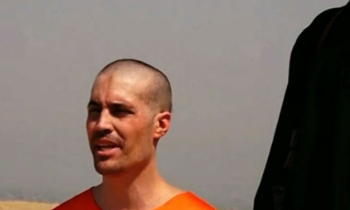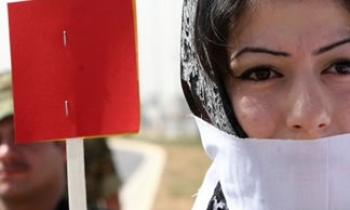Yahoo News, one of the world’s most popular news aggregation sites, plans to launch a citizen video-journalist news service at the end of June that will act as a collection and publication site for news videos generated by the public.
Sources involved in discussions with Yahoo News said the project, which has been in development for months, will introduce an upload capability that will take the PC out of the connectivity loop, so amateur video journalists can upload footage directly from the location of the event.
The idea for the citizen journalist site was inspired by the aftermath of London bombings a year ago, where a series of coordinated suicide bombings struck London's public transport system during the morning rush hour on July 7.
Dramatic photos taken by average citizens with cell phone cameras lent an aura of immediacy to the dramatic events. Photos and videos of the smoke-filled subway cars circled the world on the day of the event (see Londoners Post Attack Images).
The most-often-seen footage of the terrifying tsunami that swept Southeast Asia in December 2004 was shot by a citizen journalist using a cell phone video camera.
In comparison, the 9/11 World Trade Center attack in New York City did not generate as many photos and videos because cell phone cameras were not as ubiquitous in 2001.
“It was the aftermath of the London bombings that woke up Yahoo and the rest of the media,” said a source who requested anonymity. “They started thinking of the amazing resource that is the army of people walking around with still picture and video cameras in their cell phones.”
Yahoo was contacted on Tuesday about the story. The company neither confirmed nor denied that it planned to introduce a citizen video journalist news service.
Local News
“Not every news story will be the London bombings, but news of local and regional importance happens all the time,” said the source. “A small plane crashes near a beach. By the time the news reporters get there, the plane is under 50 feet of water and the pilot swam safely ashore.
“Chances are very good that someone on that beach has a video camera and recorded that event as it happened,” added the source.
Yahoo hopes to become the best-known brand name in citizen journalism.
But the next step after the video is shot frequently becomes a barrier to many photographers.
Today, the owner of the video camera or cell phone has to go home, connect their camera to their PC, and upload the video that way. Yahoo and its partners are working on a way to cut the PC upload process out of the loop.
Using common short codes—special telephone numbers for mobile services—a photographer on a beach can enter a five-digit short code, press Send, and upload the video directly from the phone to Yahoo.
The actual video would be transmitted wirelessly using Manufacturing Message Specification (MMS), a messaging protocol developed primarily for industrial applications.
Changing the Game
“Citizen journalism will change the world,” said the source. “Video-enabled cell phones are pretty ubiquitous as it is in the United States, but they will only become even more common in the future.”
The short-code technology would not be available at the launch of Yahoo’s citizen video-journalist web site, but the company believes the ease of use made possible by short codes will inspire the less technically inclined to upload their news videos.
For Yahoo and its partners, short codes and MMS technology are an expensive combination, but as Yahoo and other video upload sites cast about for a role beyond just shock-video distribution, citizen video journalism changes the game.
Yahoo plans to give incentives to the best news videos uploaded to its site, but the company is aware of the problems associated with establishing if the uploader actually shot the video or was just stealing a video he or she found on the web, or perhaps shot from a TV screen.
“There could be a compensation or reward structure when one can establish that the uploader is in fact the creator of the video,” said the source. “Perhaps we can work on accessing GPS coordinates to establish that the person sending the video is actually at the location.”
Contact the writer: CMedford@RedHerring.com









